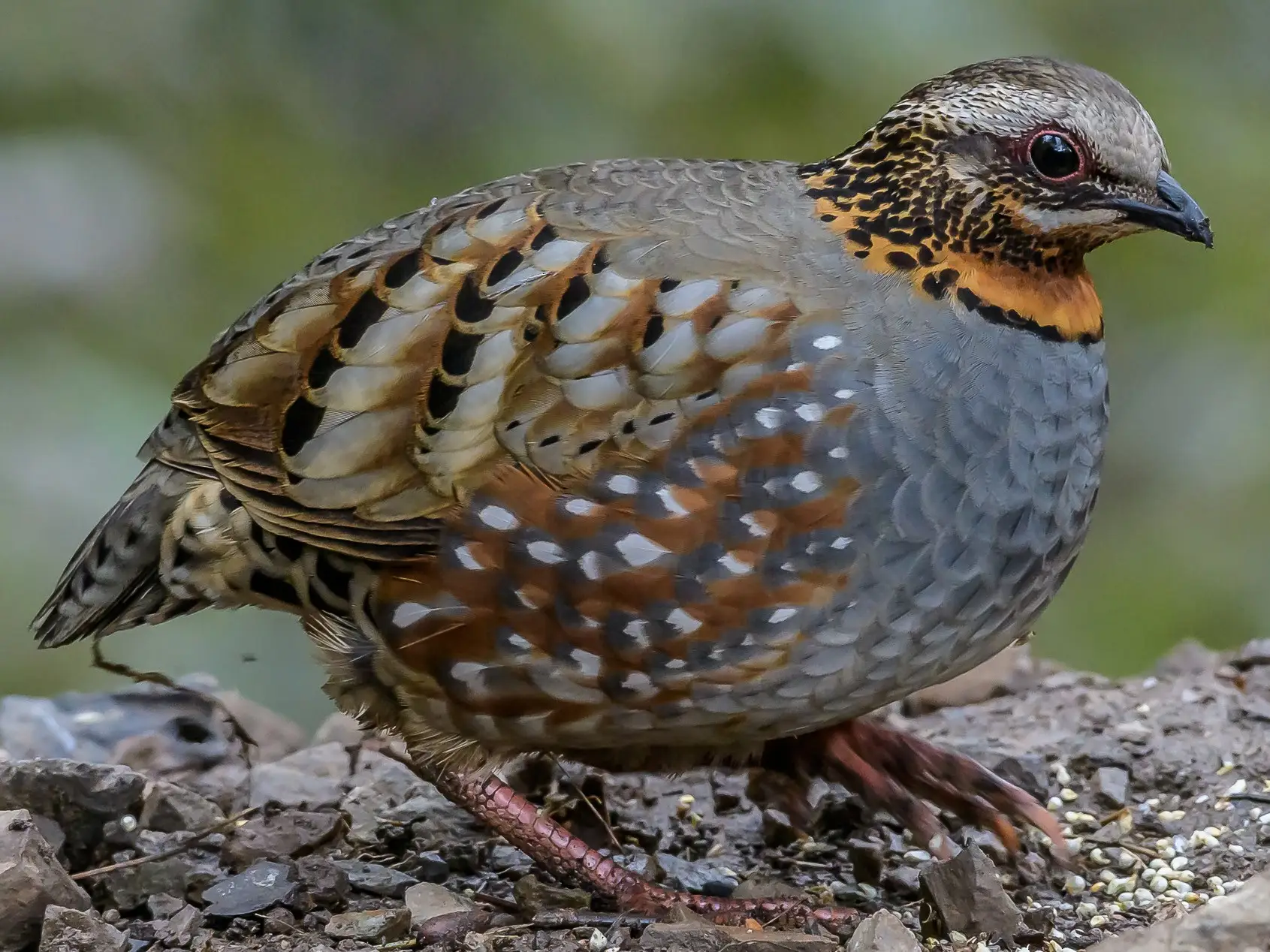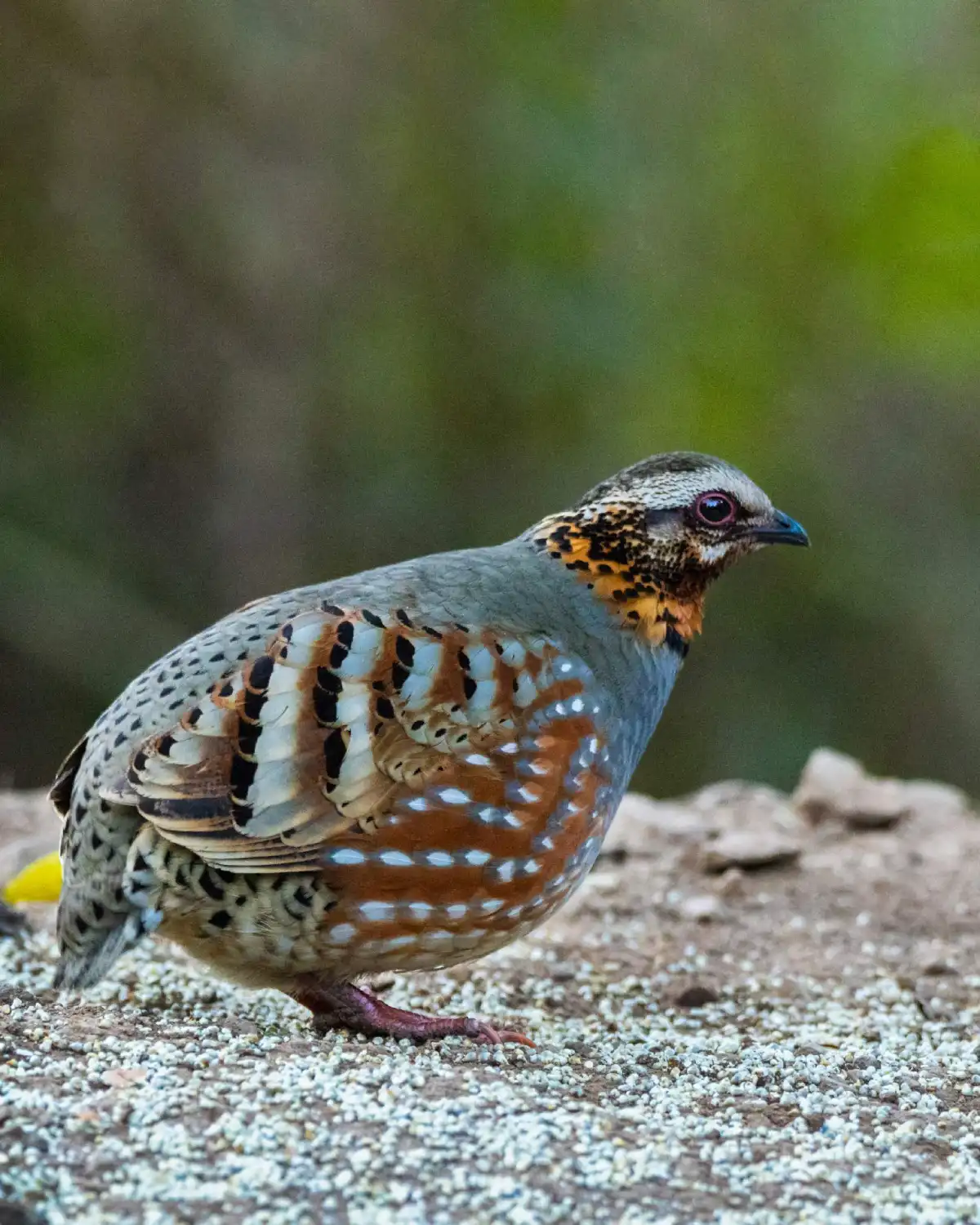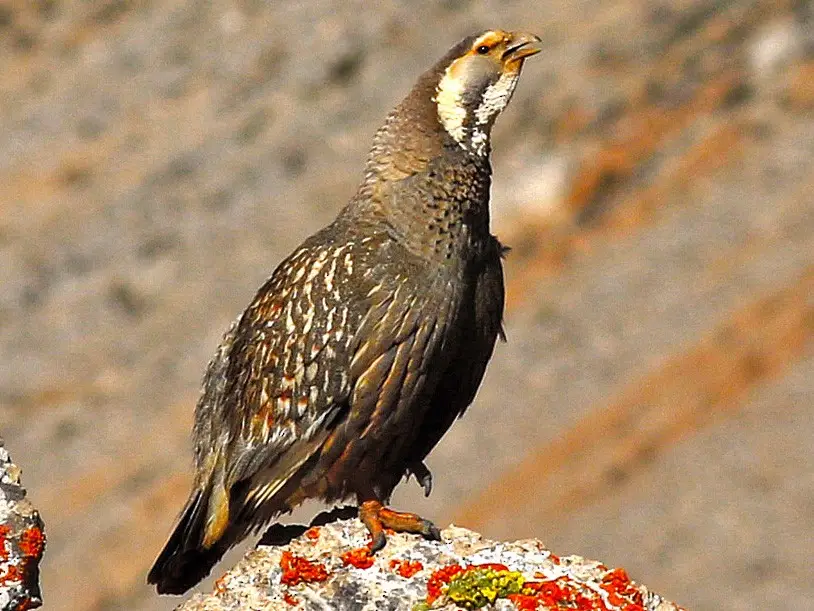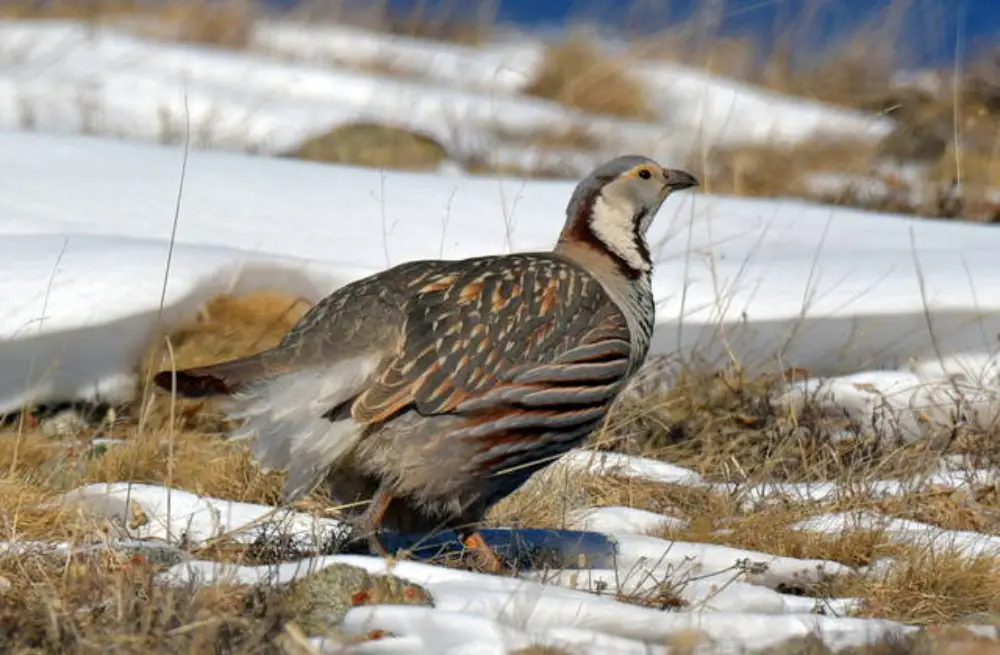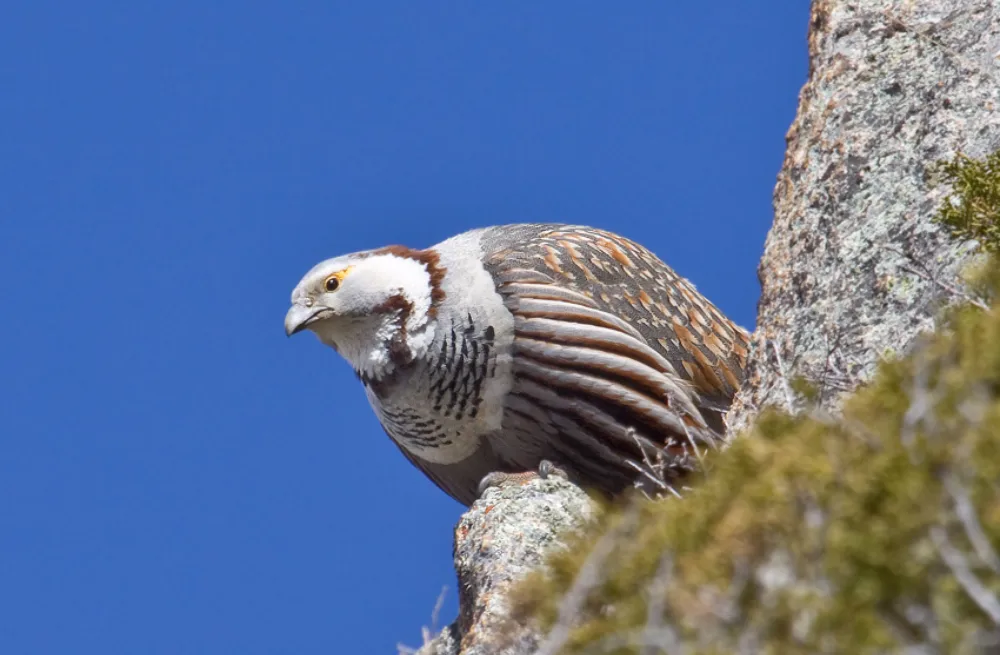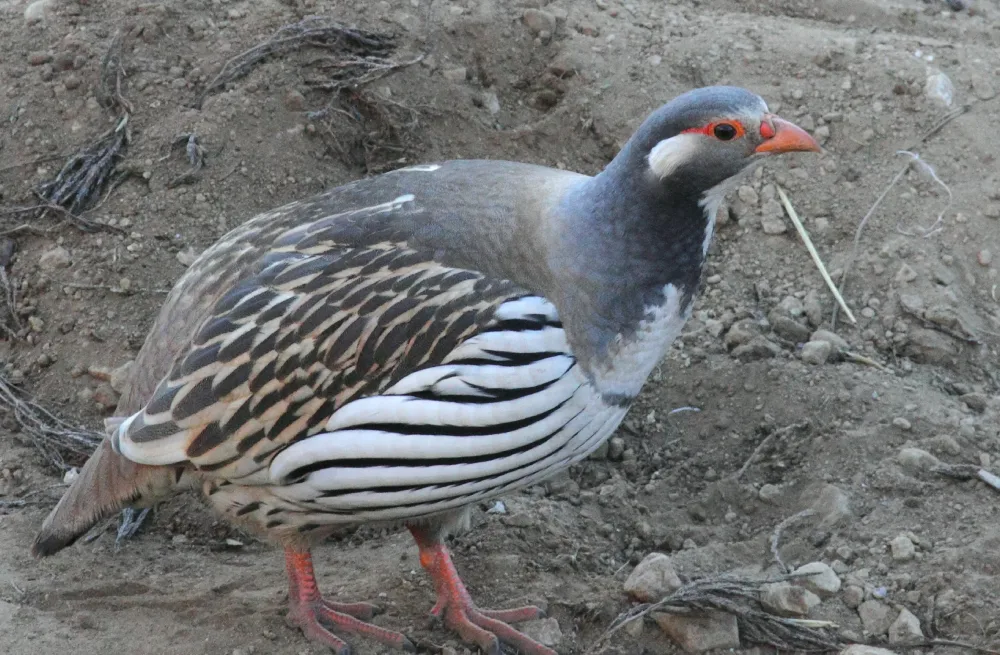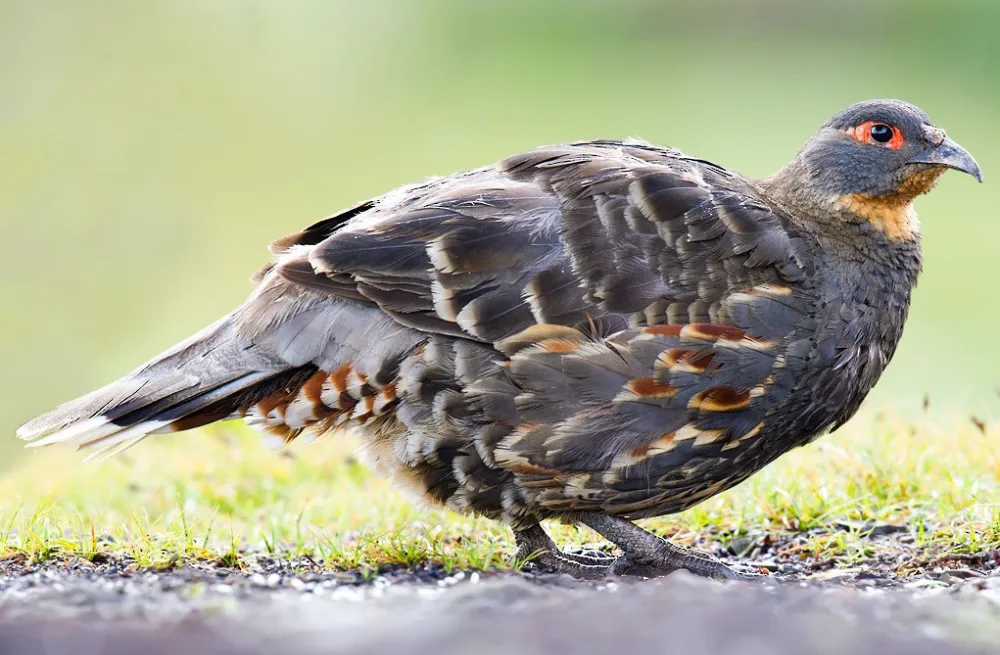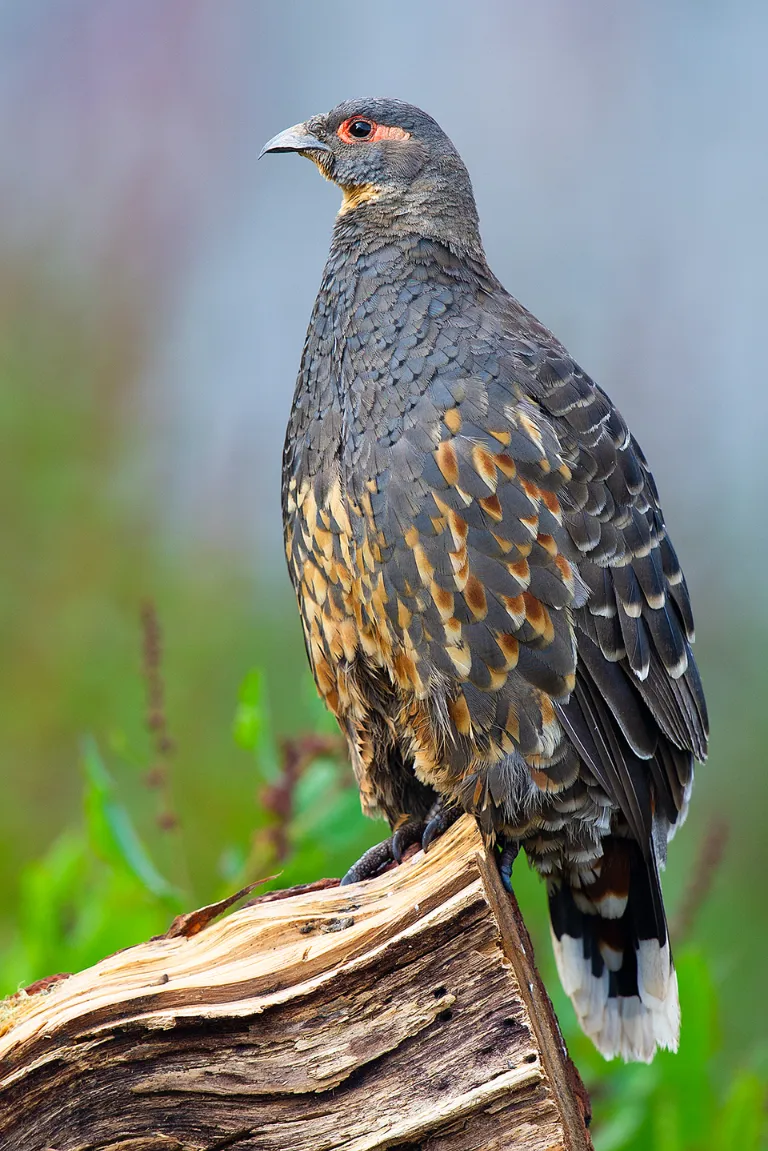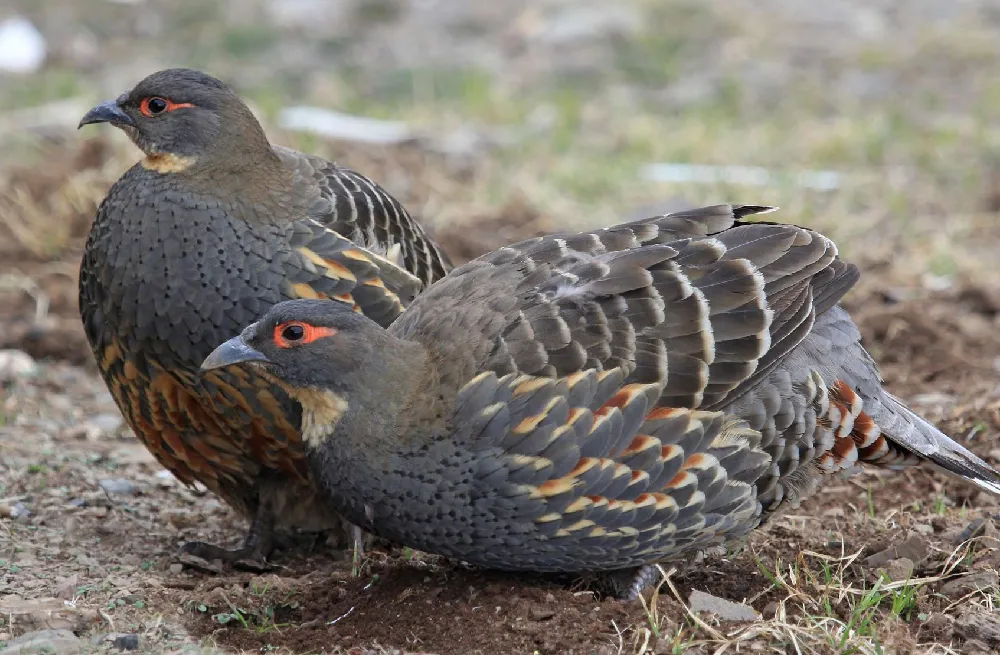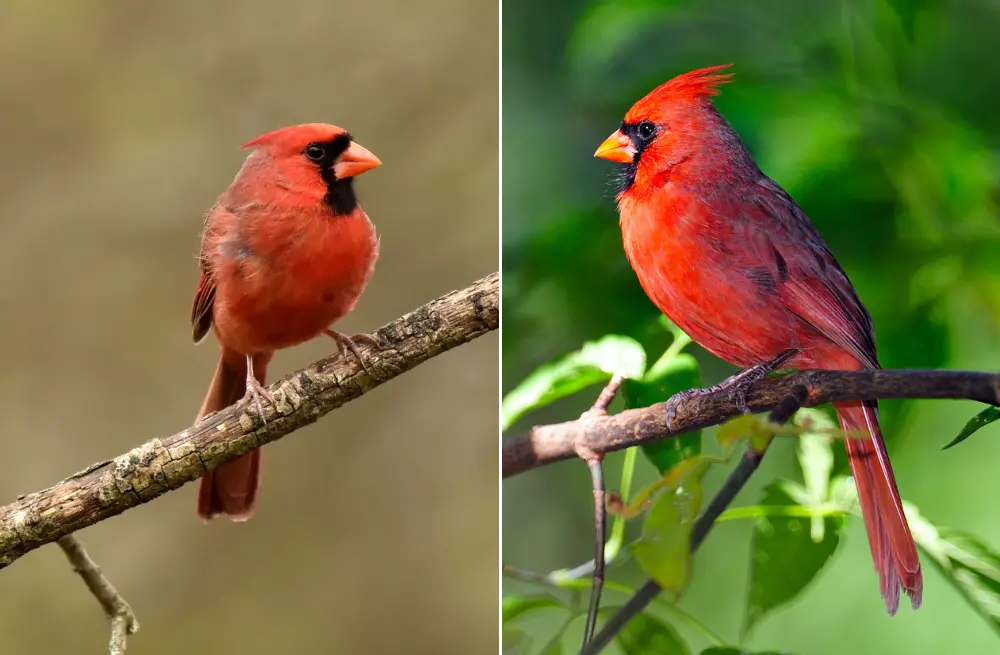Partridges, medium-sized birds that belong to the Phasianidae family, are captivating creatures that never fail to catch the eye with their vibrant plumage and distinctive features.
With their charming appearance and intriguing behaviors, partridges have become a beloved subject of fascination among bird enthusiasts and nature lovers alike
Partridges: An Introduction to These Charming Birds
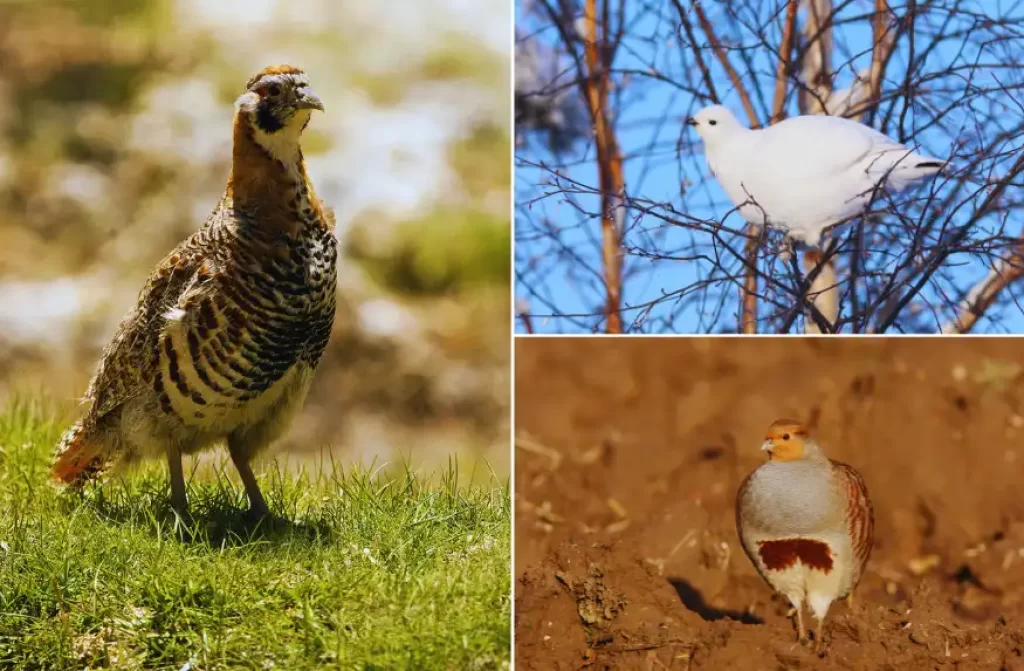
Partridges are delightful birds that belong to the Phasianidae family, which also includes pheasants, quails, and chickens.
These medium-sized birds are known for their beautiful plumage and unique characteristics. With their rounded bodies, short beaks, and sturdy legs, partridges exhibit features that make them distinct within the avian world.
Appearance
Partridges showcase a variety of colorful plumage, often adorned with intricate patterns and markings. Their feathers can range from shades of brown, gray, and red, with some species exhibiting striking contrasts and intricate designs. Many partridges have intricate patterns on their wings and tails, adding to their visual appeal.
Size
When it comes to the size of partridges, these fascinating birds typically range between 25 to 35 centimeters (10 to 14 inches) in length.
They have a distinctive appearance, characterized by their robust build, rounded bodies, and relatively short wings and tails. While there can be slight variations in size among different species of partridges, they all fall within the category of medium-sized birds.
Despite their modest dimensions, partridges are well-equipped to thrive in their diverse habitats. Their compact and agile physique allows them to navigate through various terrains with ease, whether it’s traversing dense vegetation or taking flight over open fields.
The relatively short wings and tails are perfectly adapted to their lifestyle, providing them with the necessary maneuverability for quick takeoffs and agile movements.
It’s worth noting that size can vary slightly between species of partridges. Some may exhibit slightly larger or smaller dimensions, but they all share the characteristic features that define them as part of the partridge family.
Regardless of their specific size, partridges continue to captivate bird enthusiasts and wildlife observers with their unique charm and fascinating behaviors.
Classification
Partridges are classified within the Phasianidae family, which encompasses a diverse range of game birds. This family includes various species that are valued for their meat, sport, or aesthetic appeal. The scientific name for partridges is Perdicinae, and they are further divided into different genera and species based on their specific characteristics.
Partridges are beloved for their graceful movements, charming calls, and their ability to thrive in a wide range of habitats.
In the following sections, we will delve deeper into the world of partridges, exploring their habitat, behavior, diet, and more. So let’s uncover the secrets of these enchanting birds.
Partridge Habitat and Geographic Distribution
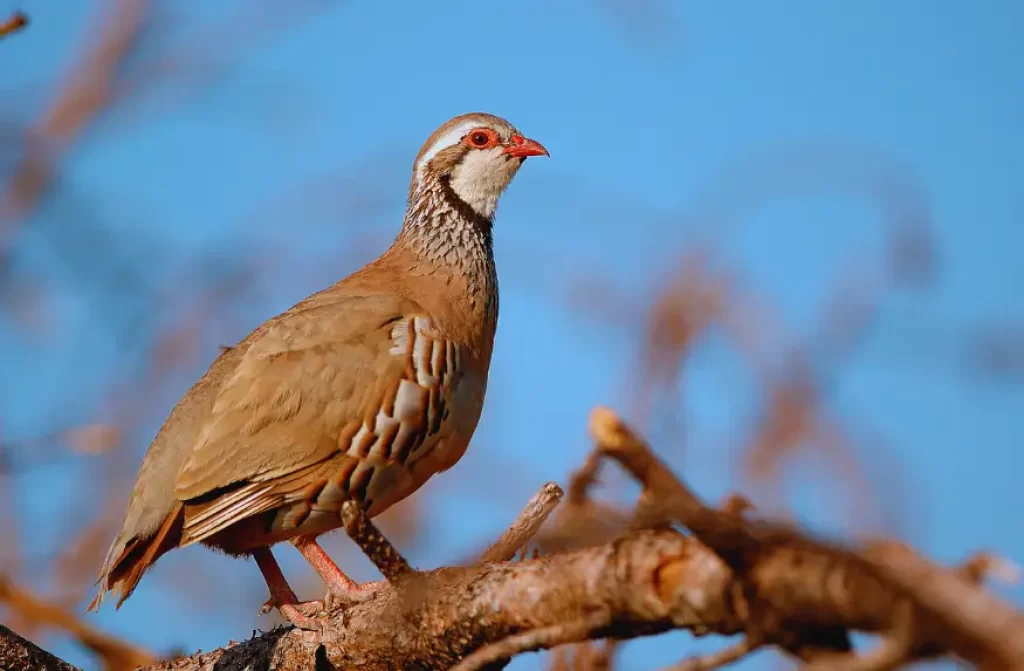
Partridges are fascinating birds that are widely distributed across various regions of the world. They have adapted to different habitats, making them adaptable and successful in diverse environments.
Habitat Preferences
Partridges exhibit a range of habitat preferences, although they generally favor areas with a combination of open spaces, shrubs, and vegetation cover. They thrive in habitats that offer suitable nesting sites, ample food sources, and protection from predators. Some common habitat types preferred by partridges include:
- Grasslands: Partridges are often found in grassy habitats, such as meadows, prairies, and steppes. These open landscapes provide them with easy access to food, including seeds, insects, and small invertebrates.
- Woodlands: Many partridge species inhabit woodlands, including forests and wooded areas. These habitats provide cover and nesting sites, as well as a diverse range of food sources.
- Savannas and Scrublands: Partridges are well adapted to semi-arid environments like savannas and scrublands, where they can find a mix of grasses, shrubs, and low-lying vegetation.
Geographic Distribution
Partridges have a global distribution, spanning various continents and regions. Here are some notable examples of partridge species and their geographic distribution:
- European Partridge (Perdix perdix): Native to Europe, this species can be found in a wide range of habitats, including farmlands, grasslands, and woodland edges.
- Chukar Partridge (Alectoris chukar): Found in parts of Asia, including the Middle East, Central Asia, and the Himalayan region, chukar partridges inhabit rocky slopes, arid mountainsides, and grassy plateaus.
- Bobwhite Quail (Colinus virginianus): Native to North America, bobwhite quails are primarily found in open grasslands, agricultural fields, and brushy areas across the continent.
- Red-Legged Partridge (Alectoris rufa): Common in Mediterranean regions, the red-legged partridge prefers habitats with a mix of agricultural land, scrublands, and open woodlands.
Physical Features of Partridges
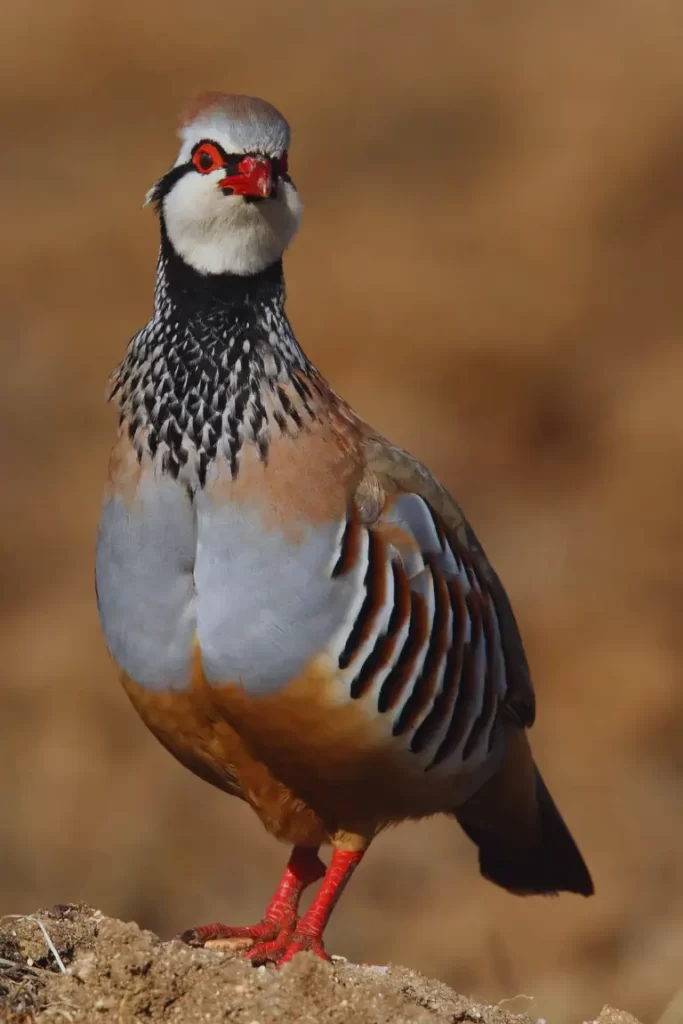
Introduction: Partridges possess distinctive physical features that contribute to their survival and adaptation in their respective habitats. In this section, we will dive into the fascinating world of partridge anatomy, exploring their plumage, beak, wings, and overall body structure.
Plumage
Partridges exhibit a remarkable array of plumage patterns and colors, allowing them to blend seamlessly into their surrounding environments. The specific plumage varies among different species, but generally, partridges have a combination of intricate patterns, including mottled browns, grays, and blacks. These colors serve as excellent camouflage, helping them hide from predators and blend into the vegetation and ground cover of their habitats.
Beak
The beak of a partridge is well-suited for its dietary needs. It is relatively short and stout, ideal for cracking open seeds and consuming vegetation. The upper mandible is slightly curved, allowing for efficient foraging in the soil and leaf litter. The beak’s strength and versatility enable partridges to feed on a variety of plant materials, including seeds, fruits, buds, and insects.
Wings
Partridges have strong and well-developed wings, which play a vital role in their survival. While they are primarily ground-dwelling birds, their wings enable short bursts of flight when escaping from predators or traveling across short distances. The wings are rounded and powerful, providing the necessary lift and maneuverability required for these quick flights.
Body Structure
Partridges have a compact and robust body structure, well-adapted for their ground-dwelling lifestyle. They have relatively short legs and strong feet, which enable them to navigate through various types of terrain, including grasslands, woodlands, and rocky slopes. Their bodies are designed for agility and quick movements, allowing them to swiftly evade predators and seek cover.
Behavior and Social Structure of Partridges
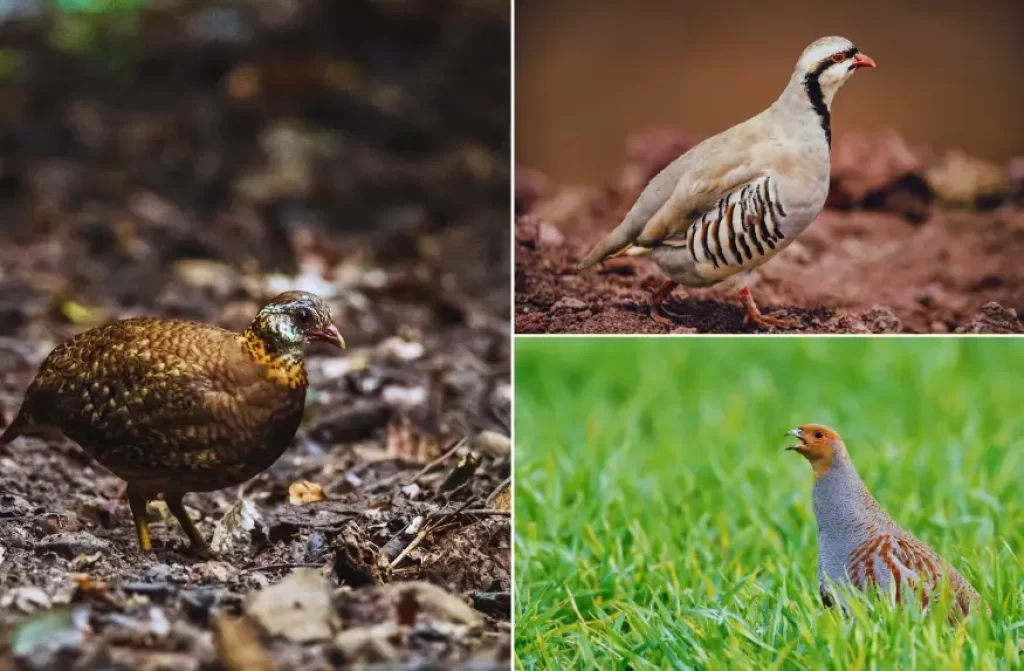
Introduction: Partridges exhibit fascinating behavior and possess complex social dynamics that contribute to their survival and reproduction. In this section, we will delve into their mating rituals, communication methods, and hierarchical structure within groups, unraveling the intricacies of their behavior and social interactions.
Mating Rituals
Partridges engage in elaborate mating rituals to attract mates and ensure successful reproduction. These rituals often involve vocal displays, physical displays, and courtship dances. Males may display their colorful plumage, puff up their feathers, and engage in intricate dances to impress females. Vocalizations, including calls and songs, are also used to communicate their reproductive intentions and establish territories.
Communication Methods
Communication plays a crucial role in the social interactions of partridges. They utilize a combination of visual displays, vocalizations, and body postures to convey messages within their groups. Vocalizations include calls for establishing territory, warning calls to alert others of potential threats, and contact calls to maintain group cohesion. Visual displays, such as puffing up feathers or raising the crest, serve as visual signals in various social contexts.
Hierarchical Structure
Partridges often exhibit hierarchical social structures within their groups. Dominance hierarchies are established, with more dominant individuals having priority access to resources and preferred mates. Dominance is typically displayed through aggressive behaviors, such as pecking, wing-flapping, or chasing. Subordinate individuals may exhibit submissive behaviors, such as crouching or avoiding direct eye contact.
Group Dynamics
Partridges are generally social birds, and they often form small groups or coveys. These groups provide benefits such as increased vigilance against predators, cooperation in foraging, and sharing of resources. Group cohesion is maintained through social interactions, mutual grooming, and vocalizations. However, individuals within the group may also engage in territorial disputes and competition for resources.
Diet and Feeding Habits
Partridges exhibit an omnivorous diet, consuming a diverse range of food items depending on their habitat and availability. Their feeding habits are influenced by their natural environment and the seasonal variations in food sources. Let’s take a closer look at the dietary preferences and feeding behaviors of these fascinating birds.
Plant Matter
Partridges feed on various plant materials, including seeds, grains, fruits, berries, leaves, and buds. They have a particular fondness for seeds, especially those of grasses, herbs, and shrubs. During the spring and summer months, when plant growth is abundant, partridges rely heavily on these plant-based food sources.
Invertebrates
In addition to plant matter, partridges also consume a wide range of invertebrates. They actively seek out insects, spiders, worms, snails, and other small invertebrates as part of their diet. This provides them with essential protein and nutrients, especially during the breeding season when they require additional energy.
Foraging Techniques
Partridges employ various foraging techniques to obtain their food. They often scratch the ground with their feet, using their bills to search for seeds and insects hidden beneath the surface. This behavior, known as “scratching,” helps them uncover hidden food items. Partridges also peck and pick at fruits, berries, and leaves, plucking them directly from plants.
Seasonal Variation
The diet of partridges can vary seasonally. In the warmer months, when plants and insects are plentiful, they rely more on plant matter and insects for sustenance. However, during the colder months when food sources become scarce, partridges may shift their diet to rely more heavily on seeds and grains, which provide them with the necessary energy to survive the winter.
Water Requirements
Partridges also need access to water for drinking and bathing. They are attracted to water sources such as ponds, streams, and puddles, where they can quench their thirst and maintain their plumage by bathing.
Reproduction and Life Cycle
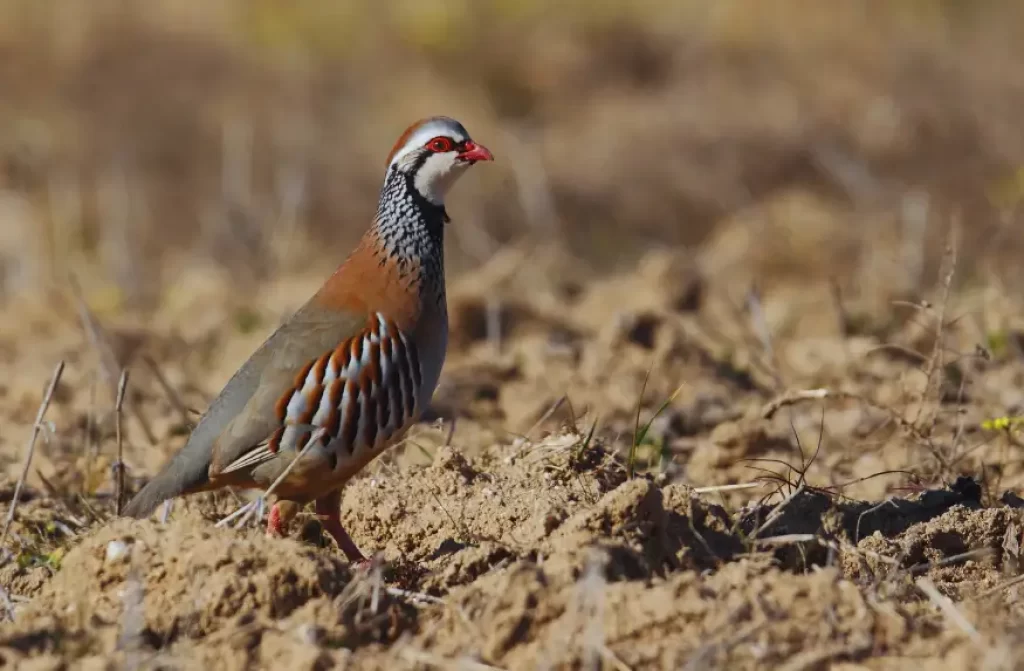
Partridges have fascinating reproductive behaviors and a unique life cycle. In this section, we will explore their courtship displays, nesting habits, incubation period, and the development of their chicks.
Courtship Display
During the breeding season, male partridges engage in elaborate courtship displays to attract females. These displays can involve a variety of behaviors such as puffing up their feathers, erecting their crest, and performing distinctive calls or songs.
Some species may also engage in energetic dances, hopping, and chasing to impress potential mates. These displays are not only a way to demonstrate their fitness and attractiveness but also to establish dominance and territorial boundaries among competing males.
Pair Bonding and Nesting
Once a male successfully attracts a female, they form a pair bond and begin the nesting process. Partridges build their nests on the ground, often concealed in dense vegetation or under shrubs to provide protection from predators and the elements.
The female takes the lead in nest construction, using twigs, leaves, grass, and other materials to create a shallow depression lined with soft vegetation, feathers, and down.
Egg Laying and Incubation
After the nest is prepared, the female partridge lays a clutch of eggs over several days, usually one egg per day. The number of eggs in a clutch can vary depending on the species, ranging from 6 to 20 eggs.
The eggs are usually creamy-white or pale-colored with speckles or markings that help camouflage them within their environment. Once the clutch is complete, the female begins incubating the eggs, using her body warmth to keep them at the optimal temperature for development.
The incubation period typically lasts around 21 to 28 days, during which the female remains dedicated to keeping the eggs warm and protected.
Hatching and Chick Development
When the eggs hatch, adorable and precocial chicks emerge. They are covered in down feathers and are capable of moving and feeding themselves shortly after hatching.
The female plays a crucial role in leading the brood, guiding the chicks and teaching them essential skills such as foraging, predator avoidance, and social interactions.
The chicks grow rapidly, and within a few weeks, they start to develop their juvenile plumage, which may resemble the adult plumage but with slight differences. As they continue to mature, they gradually transition from their juvenile plumage to the definitive adult plumage, which often takes several months.
Juvenile to Adult Transition
As the chicks mature, they become increasingly independent and start exploring their surroundings. They engage in playful behaviors, honing their physical abilities and social skills within their family group.
The exact timing of reaching sexual maturity and joining the adult population varies between species, but it generally occurs within the first year or two of their life.
Photos with Partridges
Predators and Threats
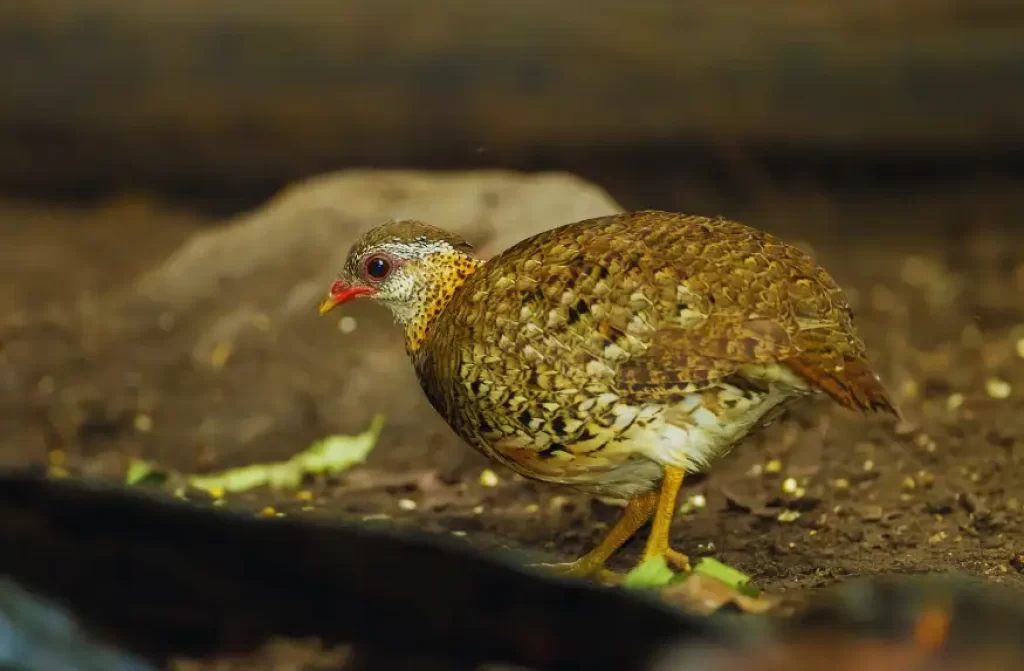
Partridges face a range of predators and threats in their natural habitats that can impact their survival.
Natural Predators
Partridges have evolved alongside a variety of natural predators that prey upon them and their eggs.
Common predators include foxes, coyotes, snakes, raptors (such as hawks and eagles), and small carnivores like weasels and raccoons.
These predators take advantage of the partridge’s ground-nesting behavior and may pose a significant threat to both adult birds and their vulnerable eggs or chicks.
Habitat Loss and Fragmentation
Habitat loss and fragmentation are major concerns for partridges. As human populations expand and land is converted for agriculture, urban development, and other purposes, the natural habitats of partridges are being destroyed or fragmented.
This loss of suitable habitat reduces the availability of food sources, nesting sites, and protective cover, making partridges more vulnerable to predation and limiting their ability to find suitable mates and establish viable populations.
Agricultural Practices
Intensive agricultural practices can also negatively impact partridges. The use of pesticides, herbicides, and fertilizers in farming can contaminate the birds’ food sources and disrupt their reproductive cycles.
Additionally, the conversion of grasslands, meadows, and hedgerows into monoculture crops reduces the diversity and availability of suitable foraging habitats for partridges.
Hunting and Poaching
In some regions, partridges are hunted for sport or as a food source. While regulated hunting can be sustainable, excessive hunting pressure or illegal poaching can have detrimental effects on partridge populations.
Overhunting can disrupt the natural balance and reduce the breeding stock, potentially leading to population declines.
Conservation Efforts
To protect partridges and address the threats they face, various conservation efforts are in place. These include:
- Habitat Conservation: Conservation organizations work to preserve and restore suitable habitats for partridges, including the protection of grasslands, wetlands, and other key ecosystems. Efforts are made to maintain and enhance habitat connectivity to allow for the movement and dispersal of partridge populations.
- Predator Management: In areas where predation pressure is high, predator management programs may be implemented to reduce the impact of predators on partridge populations. These programs often involve targeted predator control measures aimed at minimizing predation risks for partridges.
- Sustainable Hunting Practices: Regulated hunting programs and bag limits are established to ensure sustainable hunting practices that do not negatively impact partridge populations. This involves monitoring and setting quotas based on scientific research and population assessments.
- Public Awareness and Education: Raising awareness about the importance of partridge conservation and the threats they face is crucial. Educational initiatives, outreach programs, and community engagement help foster understanding and support for conservation efforts, encouraging individuals to take actions to protect partridge populations and their habitats.
- Research and Monitoring: Ongoing research and monitoring programs provide valuable data on partridge populations, habitat trends, and the effectiveness of conservation measures. This information helps guide conservation strategies and adapt management practices as needed.
Fun facts & Trivia About Partridges
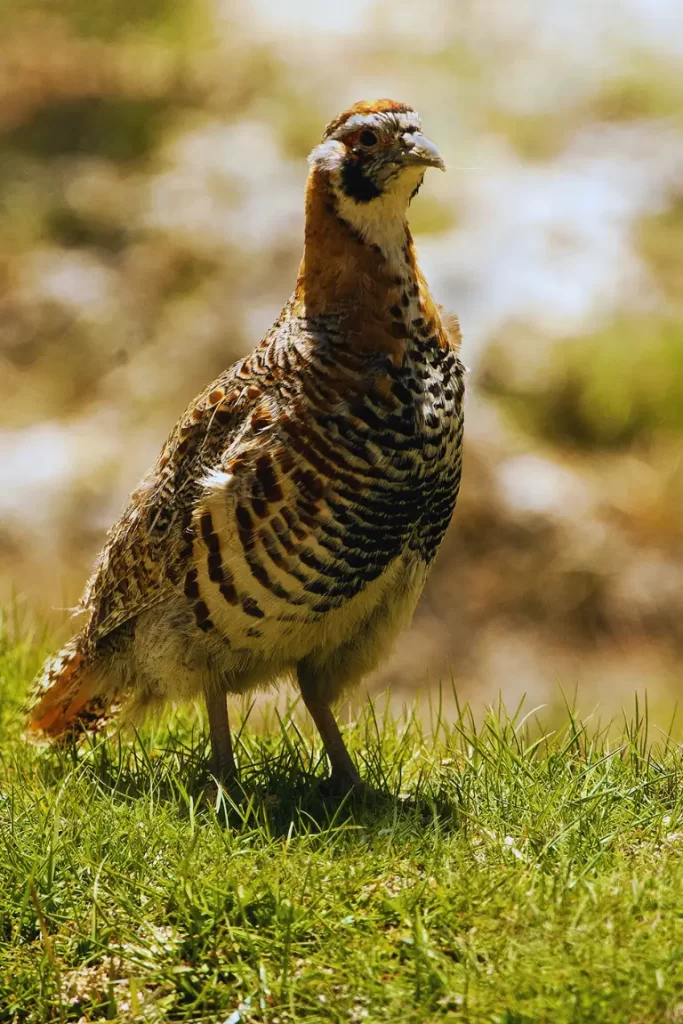
Get ready to dive into some fascinating facts about partridges that will leave you amazed and appreciative of these remarkable birds.
From their incredible camouflage skills to their unique social behavior, there’s plenty to discover about these feathered wonders.
- Family Diversity: Did you know that partridges belong to the same family as pheasants, quails, and grouse? The Phasianidae family is a diverse group of game birds with various adaptations and behaviors.
- Masters of Camouflage: Partridges are experts at blending in with their surroundings. Their plumage is perfectly designed to match the colors and patterns of their habitat, allowing them to stay hidden from predators.
- Ground-Dwellers Extraordinaire: You’ll often find partridges hanging out on the ground. They feel right at home in grasslands, agricultural fields, and forests, using their strong legs and feet for walking and running.
- Sneaky Nesters: Partridges are known for their ground-nesting habits. They create shallow nests in the soil, cleverly hidden under vegetation or natural cover. While the female incubates the eggs, the male stands guard to protect the nest.
- Independent Chicks: Partridge chicks are born with a head start. They are considered precocial, meaning they can walk and feed themselves shortly after hatching. It’s like they have their own little GPS system built-in from day one!
- Social Butterflies: Partridges enjoy company and often form small social groups called coveys. These coveys can include males, females, and young birds, engaging in activities like foraging and roosting together.
- Chirps and Calls: Partridges have their own unique language. They communicate through a variety of vocalizations, from warning calls to attract mates during the breeding season. It’s like they have their own secret bird conversations going on!
- Changing Styles: Some partridge species are fashionistas of the bird world. During the breeding season, male partridges may transform their appearance, showing off vibrant colors or intricate patterns to impress the ladies.
- Cultural Connections: Partridges have found their place in folklore, hunting traditions, and even culinary customs around the world. They symbolize things like prosperity, fertility, and resilience in different cultures, adding a touch of charm to their reputation.
- Sporting Pursuits: Partridges are a sought-after game bird for hunting enthusiasts. Their flavorful meat and the thrill of the chase make them a popular target for hunters who appreciate the challenge and the reward.
These incredible tidbits of information bring partridges to life, showcasing their adaptability, social interactions, and cultural significance.
So, the next time you spot a partridge in the wild or on a dinner menu, you’ll have a newfound appreciation for these intriguing birds and their remarkable place in the natural world.
Some Species of Partridges
- Family: Phasianidae (Pheasants, Partridges, and Grouse)
- Subfamily: Perdicinae (Partridges)
Species:
- Alectoris chukar (Chukar Partridge)
- Alectoris graeca (Rock Partridge)
- Alectoris melanocephala (Black-headed Partridge)
- Alectoris philbyi (Philby’s Partridge)
- Ammoperdix griseogularis (Arabian Partridge)
- Ammoperdix heyi (See-see Partridge)
- Arborophila ardens (Taiwan Partridge)
- Arborophila atrogularis (Sumatran Partridge)
- Arborophila cambodiana (Cambodian Partridge)
- Arborophila charltonii (Malaysian Partridge)
- Arborophila chloropus (Green-legged Partridge)
- Arborophila crudigularis (Chestnut-necklaced Partridge)
- Arborophila davidi (Annam Partridge)
- Arborophila gingica (Sunda Partridge)
- Arborophila javanica (Javan Partridge)
- Arborophila mandellii (Himalayan Quail)
- Arborophila rufipectus (Red-breasted Partridge)
- Arborophila rubrirostris (Red-billed Partridge)
- Alectoris rufa (Red-legged partridge)
- Arborophila rufogularis (Rufous-throated Partridge)
- Arborophila torqueola (Turquoise-throated Barbet)
- Arborophila torqueola humei (Hume’s Partridge)
- Arborophila torqueola mandellii (Red-breasted Partridge)
- Arborophila torqueola phayrei (Annandale’s Partridge)
- Arborophila torqueola sumatrensis (Sumatran Partridge)
- Arborophila torqueola torqueola (Turquoise-throated Partridge)
- Arborophila torqueola whiteheadi (Whitehead’s Partridge)
- Caloperdix oculeus (Ferruginous Partridge)
- Caloperdix palliolata (Chestnut-bellied Partridge)
- Lerwa lerwa (Himalayan Snowcock)
- Margaroperdix madagarensis (Madagascar Partridge)
- Melanoperdix niger (Black Partridge)
- Melanoperdix nigra (Black Wood Partridge)
- Perdix dauurica (Daurian Partridge)
- Perdix hodgsoniae (Tibetan Partridge)
- Perdix perdix (Grey Partridge)
- Rhizothera dulitensis (Chestnut-necklaced Partridge)
- Rhizothera longirostris (Long-billed Partridge)
- Tetraophasis obscurus (Szechenyi’s Monal-Partridge)
- Tetraophasis szechenyii (Blood Pheasant)
- Tetraogallus altaicus (Altai Snowcock)
- Tetraogallus caucasicus (Caucasian Snowcock)
- Tetraogallus caspius (Caspian Snowcock)
- Tetraogallus caspius caspius (Caspian Snowcock)
- Tetraogallus caspius jaxarticus (Kazakhstan Snowcock)
- Tetraogallus caspius lantischi (Tajikistan Snowcock)
- Tetraogallus caspius semenowi (Turkmenistan Snowcock)
- Tetraogallus caspius zalokhanensis (Uzbekistan Snowcock)
- Tetraogallus caucasicus caucasicus (Caucasian Snowcock)
- Tetraogallus caucasicus cilix (Western Caucasian Snowcock)
- Tetraogallus caucasicus macropus (Eastern Caucasian Snowcock)
- Tetraogallus caucasicus viridanus (Eastern Turkestan Snowcock)
- Tetraogallus caspius semirufus (Afghanistan Snowcock)
- Tetraogallus himalayensis (Himalayan Snowcock)
- Tetraogallus himalayensis griseipectus (Himalayan Snowcock)
- Tetraogallus himalayensis himalayensis (Himalayan Snowcock)
- Tetraogallus himalayensis kotyki (Kashmir Snowcock)
- Tetraogallus himalayensis macrotis (Western Himalayan Snowcock)
- Tetraogallus himalayensis mauritanicus (Mongolian Snowcock)
- Tetraogallus himalayensis szechenyi (Szechenyi’s Snowcock)
- Tetraogallus himalayensis tibetanus (Tibetan Snowcock)
- Tetraogallus himalayensis wardi (Ward’s Snowcock)
- Tetraogallus tibetanus (Tibetan Snowcock)
- Tetraogallus tibetanus alashanicus (Alashan Snowcock)
- Tetraogallus tibetanus chambulak (Central Asian Snowcock)
- Tetraogallus tibetanus dutsoni (Qinling Snowcock)
- Tetraogallus tibetanus tibetanus (Tibetan Snowcock)
- Tetraogallus tibetanus waddelli (Northwest Chinese Snowcock)
Conclusion
Delving into the world of partridges has allowed us to develop a profound appreciation for these captivating birds. Their stunning plumage and distinctive features make them a true marvel of nature.
If you have enjoyed learning about partridges and their fascinating characteristics, we invite you to explore our other articles on animals or avian species. Our collection of articles offers a wealth of information and captivating insights into the remarkable world of wildlife.
So, continue to marvel at the beauty of partridges and delve further into the intriguing realm of animals and avians. There is always more to discover and appreciate in the diverse and wondrous realm of the animal kingdom.
Tags: AviansBirdsPartridges

